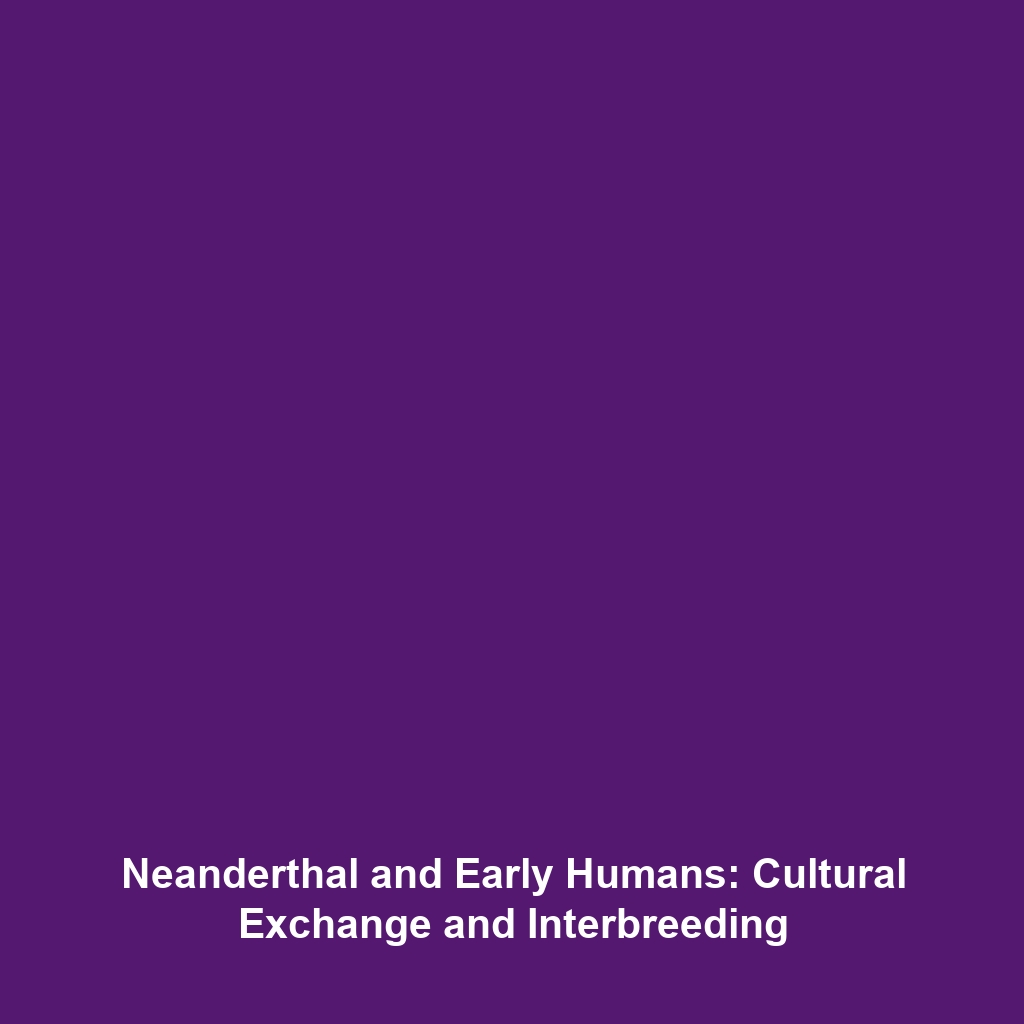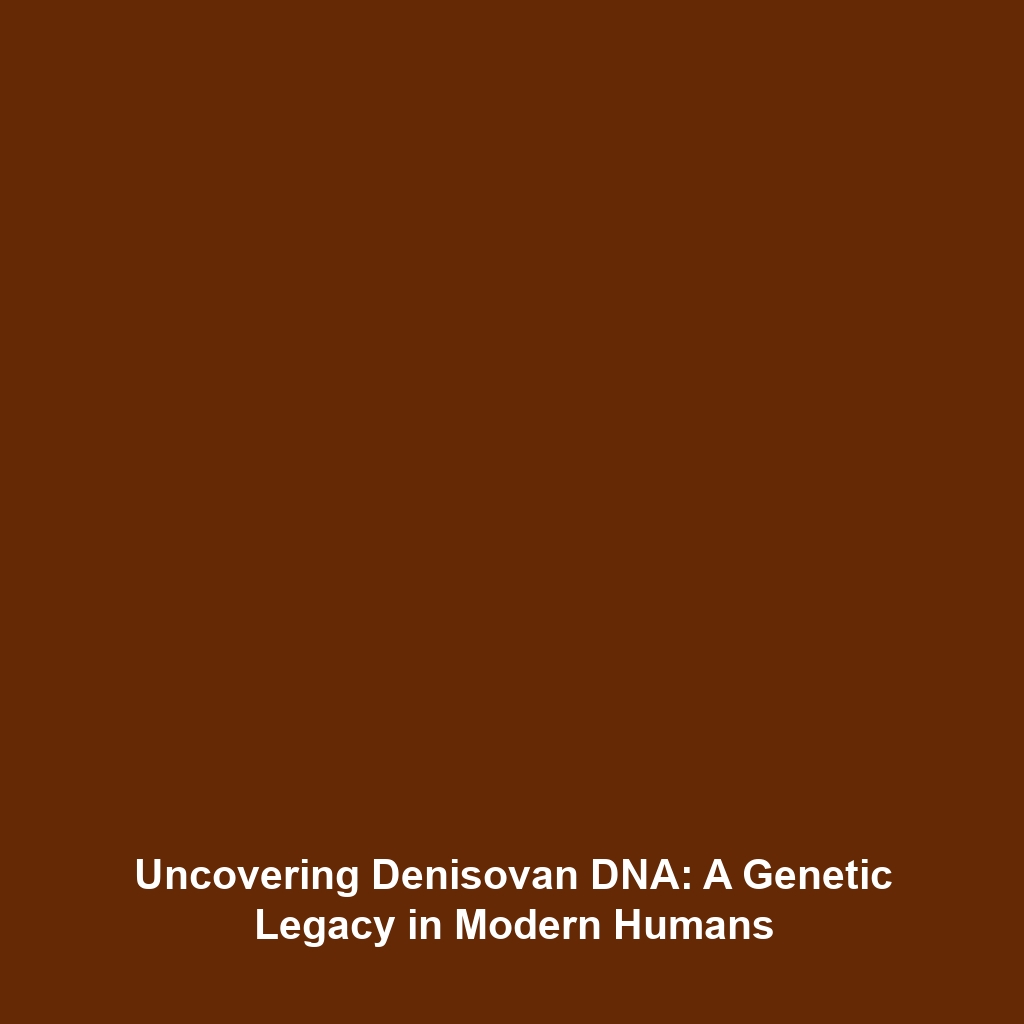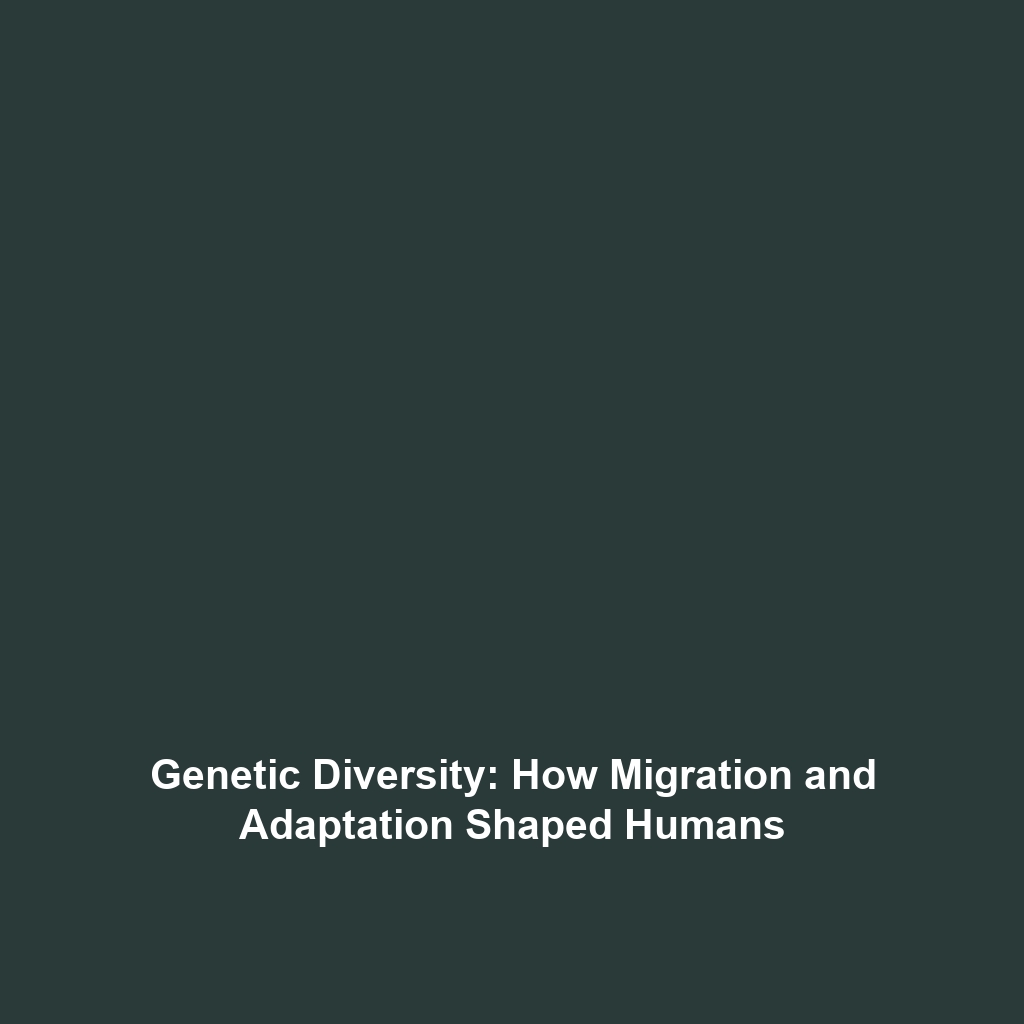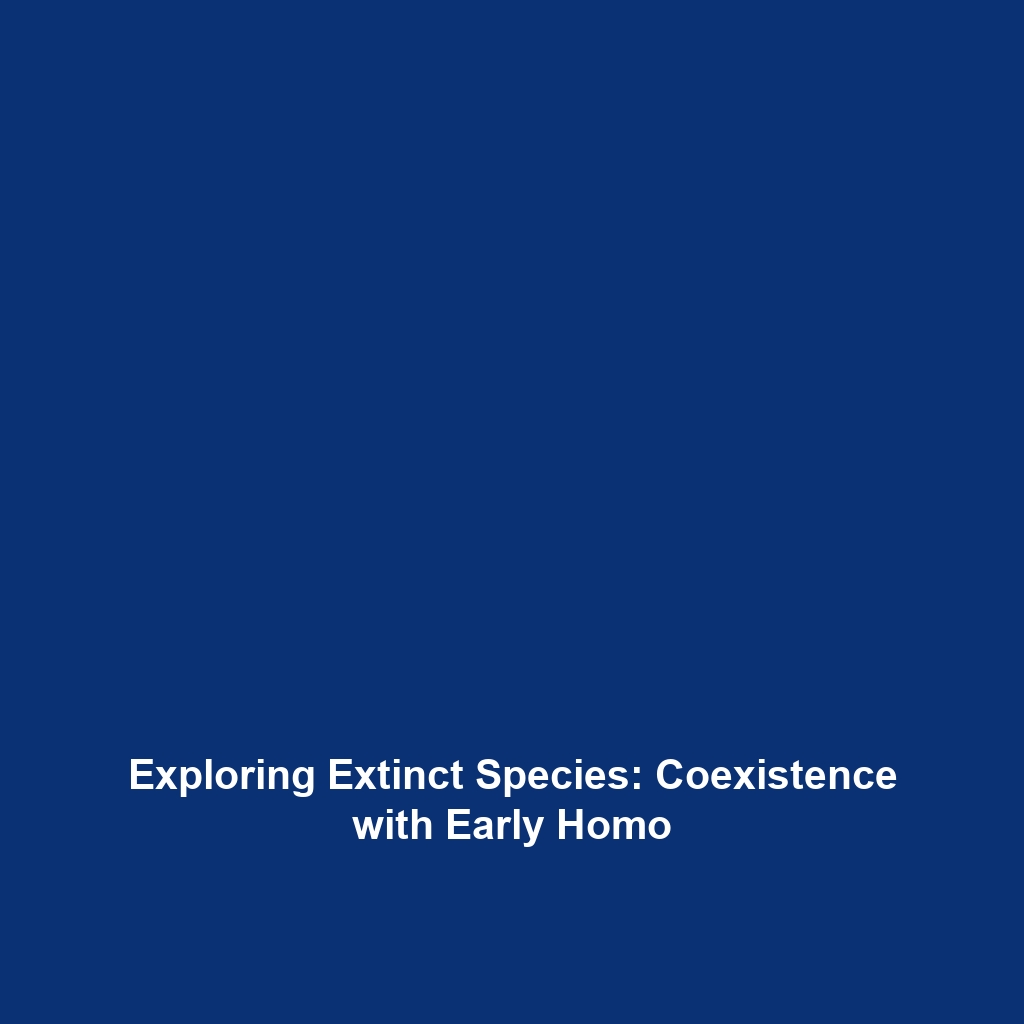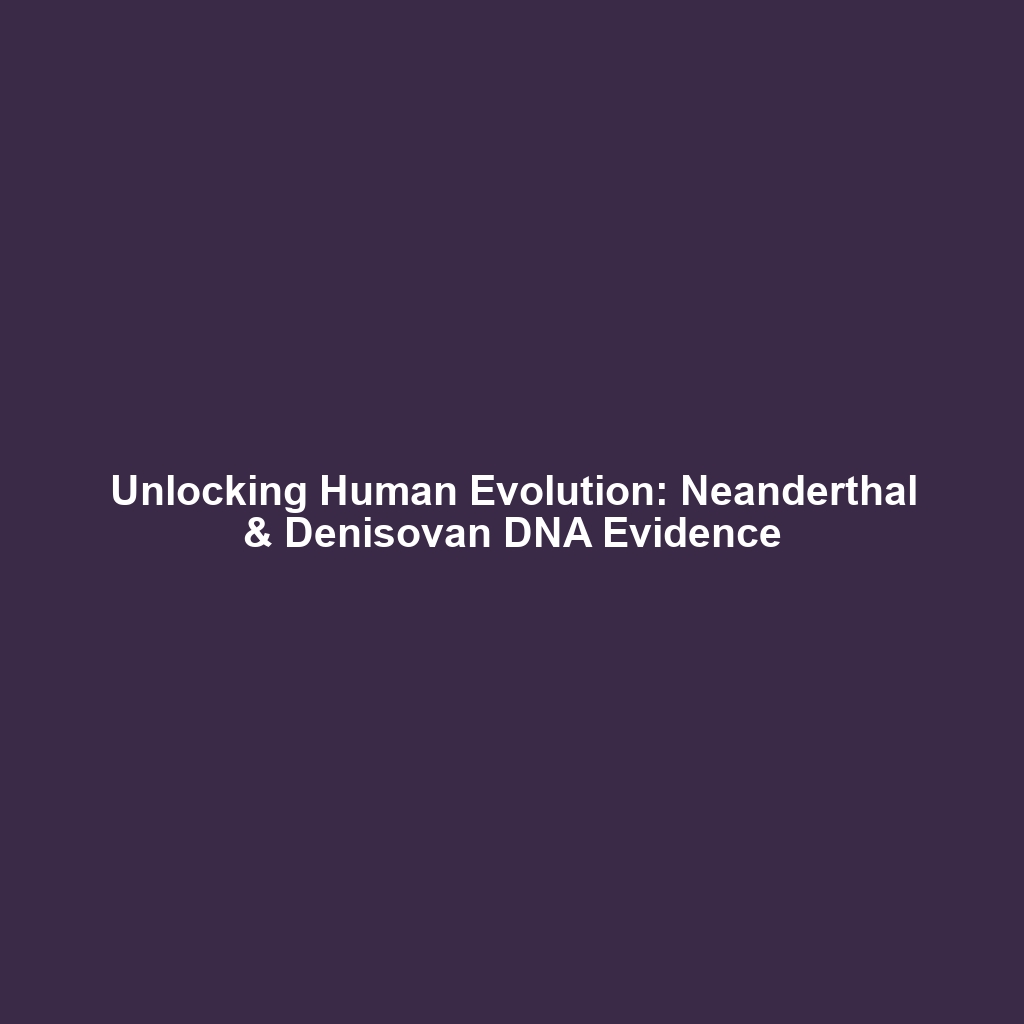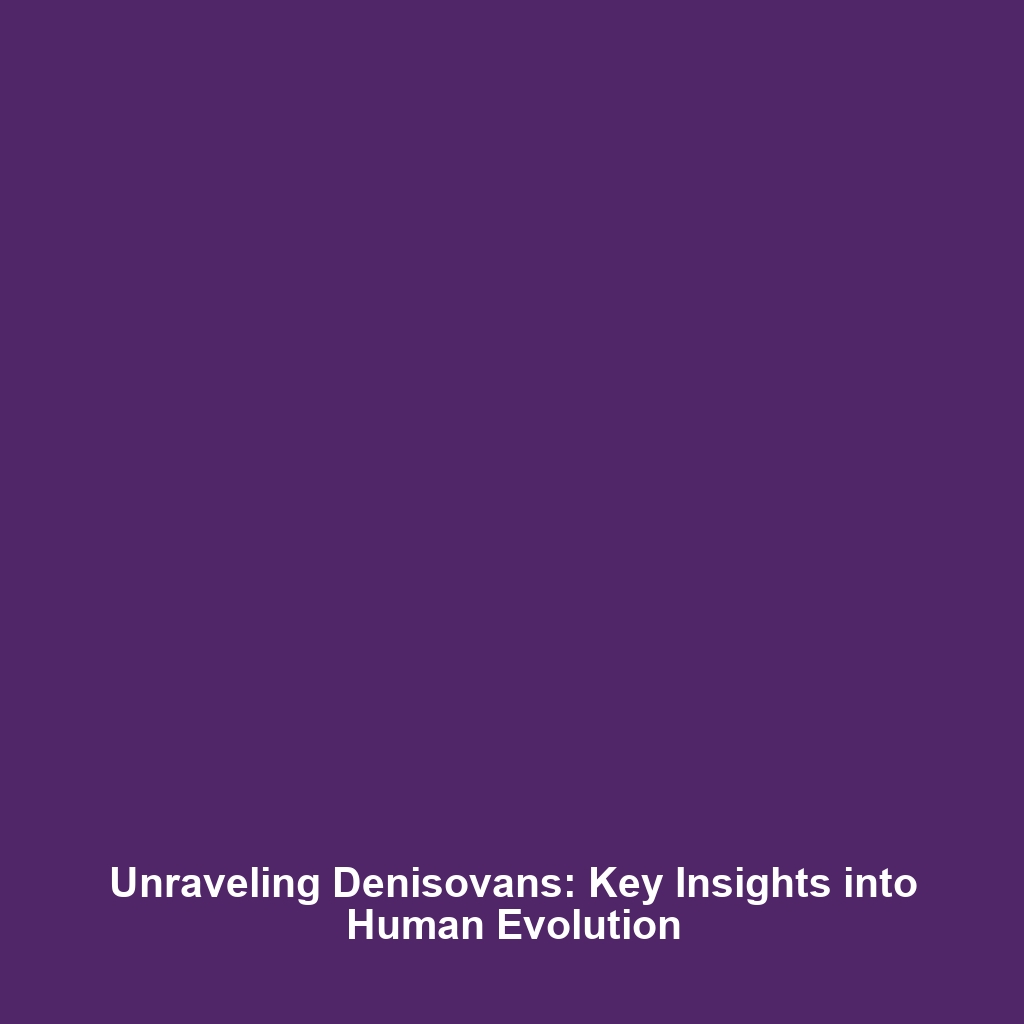Interbreeding and Cultural Exchange: Neanderthals and Homo sapiens
Category: Human Evolution
Introduction
The interaction between Homo sapiens and Neanderthals stands as one of the most significant chapters in the story of human evolution. Evidence of interbreeding and cultural exchange, such as shared tool-making skills and burial practices, illuminates the complex relationships that existed between these two distinct yet interconnected species. Understanding these interactions is not only vital for comprehending our own ancestry but also for grasping the broader dynamics of human evolution itself. This article explores the facts surrounding these interactions and their implications for our understanding of ancient human history.
Key Concepts
Interbreeding Evidence
Genetic analysis has revealed that modern non-African humans carry approximately 1-2% of Neanderthal DNA, a strong indication of interbreeding between the two species. This blending of genetic material suggests that Neanderthals contributed to the genetic diversity of early modern humans, enhancing their adaptability and survival.
Cultural Exchange
Archaeological findings indicate that interactions went beyond mere reproduction. Evidence of shared technologies, including sophisticated stone tools and burial rites, points to a potential transfer of knowledge and practices. These cultural exchanges may have facilitated the development of complex behaviors in both species, demonstrating a remarkable level of interaction and influence.
Applications and Real-World Uses
The study of interbreeding and cultural exchange provides invaluable insights into human evolution. Understanding how Neanderthals and Homo sapiens interacted can lead to numerous real-world applications:
- How interbreeding is used in anthropology: Insights from ancient DNA help anthropologists piece together migration patterns and social structures.
- Applications of cultural exchange in archaeology: Recognition of shared tools reveals trade routes and community interactions, enriching our understanding of early human societies.
Current Challenges
Despite significant advancements, researchers face several challenges in studying interbreeding and cultural exchanges:
- Challenges of genetic analysis: The preservation of ancient DNA is a significant hurdle, often resulting in incomplete or degraded samples.
- Issues in interpreting archaeological evidence: Distinguishing between Neanderthal and modern human artifacts can be difficult, complicating the narrative of cultural exchange.
Future Research and Innovations
The future of research into Neanderthal and Homo sapiens interactions looks promising with the advent of next-generation sequencing technologies and innovative archaeological methods. These advancements may facilitate:
- The recovery of higher-quality ancient DNA.
- The development of more sophisticated models to understand social behaviors and migration patterns.
These breakthroughs could further illuminate the complexities of human ancestry and behavior, solidifying the importance of Neanderthals in our evolutionary narrative.
Conclusion
The interactions between Homo sapiens and Neanderthals represent a crucial aspect of human evolution. Evidence of interbreeding and cultural exchange not only enriches our understanding of genetic diversity but also highlights the shared heritage of humanity. Future research is essential to unravel the complexities of these ancient connections. For those interested in diving deeper into the facets of human ancestry, explore other related topics such as Neanderthal culture and the evolution of human tools.
